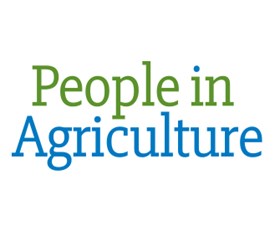Planning for New Employees on Your Farm

Introduction
These days it's almost impossible to do all the work on our farms without at least a little help from the outside workforce. Successful farms are run by successful employers, this isn't something that happens by chance. An organised employer will have a strong understanding of the role and type of person they want for their farm, and be able to communicate their expectations clearly. This gives them a better chance of finding and keeping the right person for the job.
Job analysis
Before you employ someone, you need to understand the position to be filled and the type of person required to fill it. The best way to do this is to undertake a job analysis.
A job analysis helps you decide the tasks you need performed, and the knowledge, skills and experience a person needs to perform those tasks.
When thinking about the work involved, you should consider:
- which parts of the farm system the employee will be working in;
- what specific tasks need to be done in these areas;
- whether they will change in the next 12 months;
- what reporting or structure will need to be in place; and
- whether you need a tool to measure job performance.
Think carefully about what you really want and need in the future. Do you just need general help around the farm (for example, a casual or part-time farm hand) or do you want to delegate some responsibility to a full-time farm manager and have some work life balance or maybe even a holiday?
Maybe you are even looking for a future partner or someone to buy into the farm long term?
You will also need to think about what classification or pay is appropriate for the level of worker you are recruiting and whether the position will be an ongoing Permanent Job or a Short Term Casual Position (see Different Types of Employment below)
See the How much do I pay someone section for more information about pay rates.
If you are filling an existing position rather than creating a new one, think about whether any elements of the position need to be changed. For example, are there more responsibilities to include and should the pay rate stay the same?
Job Analysis and Template - Word Doc
Different types of employment
There are many different ways to employ people. Choosing to employ people under different categories can keep flexibility in your workforce while also meeting the needs of the business. Make sure you choose an employment type that suits both you and the employee and that you comply with Legal Requirements
The most common types of employment are:
- Casual - employee's work hours may vary per week, depending on the amount of work available.
- Part-time - employees work less than 38 hours per week, with a guaranteed number of hours.
- Full-time - generally, employees work 38 hours per week.
You can also employ someone for a fixed term, season or to complete a specific job.
For more information regarding different types of employment, see the Legal Requirements section.
Sometimes good employees are hard to find. You might be able to train up an existing employee or take on an Apprentice or Trainee. Or maybe backpackers or overseas workers would suit your short-term staffing needs?
See Payroll and Legal Requirements sections for information about tax payments and visas for overseas workers.
Beware of engaging a person as an independent contractor to perform work normally performed by an employee. For more information about independent contractors see the "Contractor or Employee?" fact sheet below.
New definition for Casual employees (updated September 2021)The FW Act and the Pastoral Award 2020 have been amended to include a new definition of a casual employee.
A person is a casual employee if they accept a job offer from an employer knowing that there is no firm advance commitment to ongoing work with an agreed pattern of work.
Once employed as a casual, an employee will continue to be a casual employee until they become a permanent employee through:
- casual conversion, or
- being offered and accepting full-time or part-time employment, or
- they stop being employed by the employer
The law about casual conversion has changed.
WHAT IS CASUAL CONVERSION?
Casual conversion means the right of a casual employee to request that their casual employment be made permanent employment.
The Pastoral Award 2020 has been varied as of 27 September 2021 to incorporate the National Employment Standard about casual conversion.
The rules are different for small and large businesses.
Small businesses (requests by employees)
- Employees of small businesses (less than 15 employees) can make a request to convert their employment from casual to permanent in certain circumstances if they have been working as a casual for 12 months.
- Employees of large businesses (15 employees or more ) can make a request after 27 September 2021 to convert their employment from casual to permanent in certain circumstances if they have been working as a casual for 12 months.
- Employers in large businesses also have to offer employees the opportunity to convert their employment to permanent after 27 September 2021 in certain circumstances if they have been working as a casual for 12 months.
There is a new Casual Employment Information Sheet which all small business employers must give to all casual employees now and all large businesses must give to all casual employees after 27 September 2021
Casual Employment Information Sheet - Fair Work Ombudsman PDF
Go to the Fair Work Ombudsman website for more information about the process for casual conversion.
What is an apprenticeship or traineeship? - Word Doc
Contractor or Employee? - Word Doc
Overseas Workers and Visas - Word Doc
Readiness checklist
Before you commit to hiring an employee, there are a number of things you need to consider:
- Do you understand all your legal obligations?
- Do you have all the necessary paperwork and forms completed?
- Have you looked at your farm's income to make sure you can afford to pay someone?
- If you are hiring someone for a seasonal role, do you know roughly how many hours you will need to employ them for and the total cost of their labour?
- Have you factored in superannuation, professional development, a probation or learning period, the cost of your own time to conduct interviews, inductions, and ongoing tasks such as creating pay slips and performance reviews?
- You also need to think about staff training. You may know your farm inside out but do you know the best way to communicate your expectations of your employees?
- How are you going to make sure that employees are happy and productive in their workplace?
The Readiness Checklist is a great starting point. It covers some of the things you need to think about before you begin the process of hiring an employee. It also contains links to government sites where you can access more information and some of the forms that will be required for the recruitment process.
Readiness checklist – Word Doc





